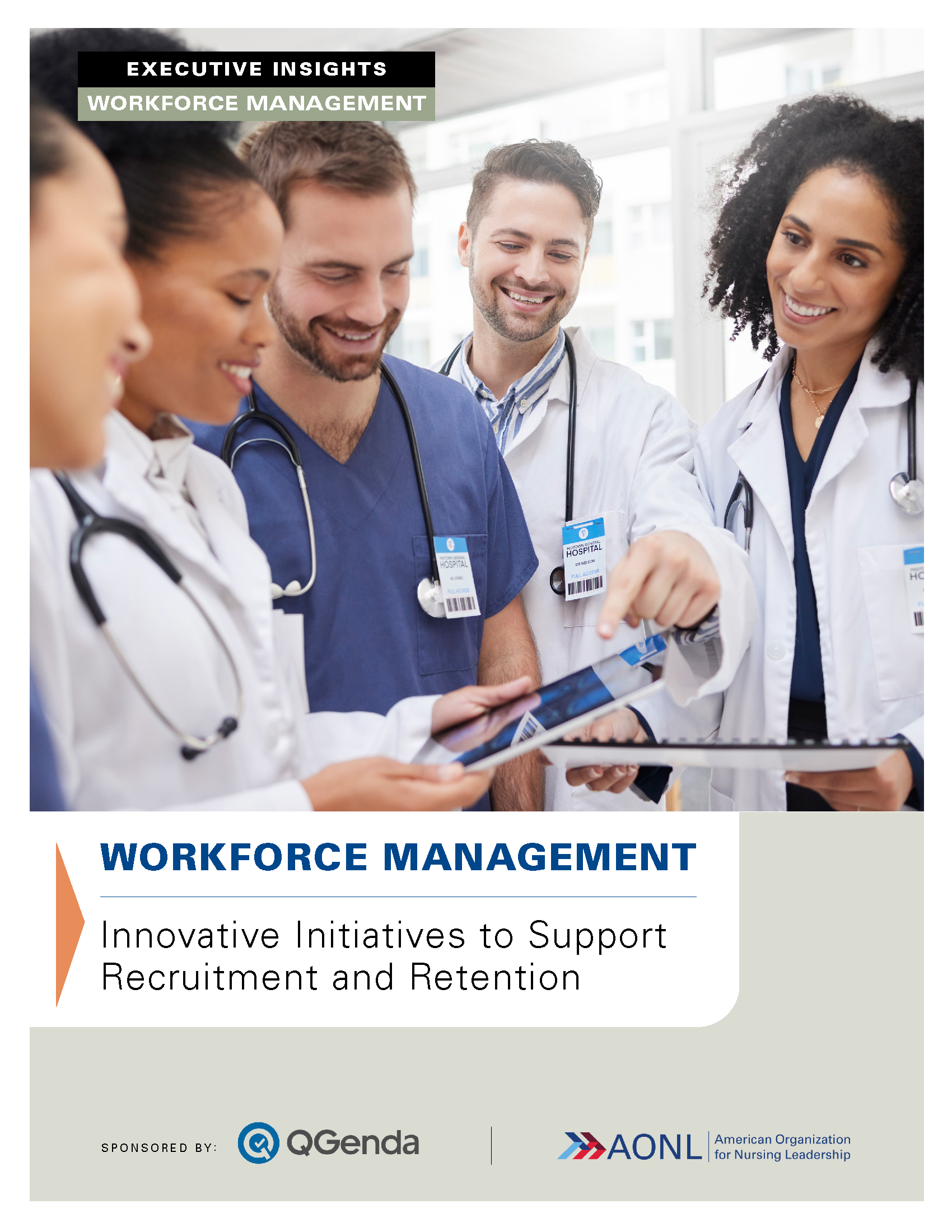
Workforce Management: Innovative Initiatives to Support Recruitment and Retention
Workface Management: Innovative Initiatives to Support
Recruitment and Retention
[Sponsored] Hospitals and health systems are grappling with complex staffing requirements, exacerbated by rising patient demands and financial constraints. As burnout, high cost labor and attrition challenge health care organizations everywhere, leaders retain nursing staff with fresh takes on training, professional development and productivity. In this executive dialogue, nurse leaders discussed health care’s most pressing workforce management issues, and the role of adaptability, equity and innovation in maintaining a thriving workforce.

This executive dialogue will highlight key findings on:
- Leadership development programs, flexible work arrangements, nurse recognition events, and a cultural focus on staff well-being can help stabilize the nursing workforce and address burnout. Similarly, virtual training and telecommuting can help accommodate nurses’ preference for flexible schedules.
- Challenges in filling specific roles, such as med/surg positions, require proactive efforts. Enhanced training, mentorship and career progression programs can help new nurses gain confidence and interest in these specialties.
- Collaboration between nursing and other units can streamline processes, encourage shared expertise, and improve communication. For example, nurses can work with IT to simplify documentation. Involving CNOs in technology decision-making can optimize resource allocation.
- Tools such as staff forecasting software and well-being scorecards can help leaders to distribute resources and schedule labor fairly. Metrics like the Productivity Index help optimize labor costs, staffing efficiency, and improve retention.
- When nurses feel heard and have a say in their work environment, they are more satisfied and likely to stay in their jobs. Supporting professional growth, honoring their preferred work styles and addressing concerns like burnout keep nurses engaged.
Sponsored by


Related Resources
Headline
The omicron subvariant BA.2 accounts for 35% of U.S. COVID-19 cases nationwide and more than 50% in the Northeast, according to estimates from the CDC
Sponsored White Papers
Workforce management strategy can be complex, but one thing is clear: Some employers are overlooking critical details in driving staff engagement. A…
Sponsored White Papers
The COVID-19 pandemic has impacted nurses in unprecedented ways. Based on our comprehensive national survey, we share new insights on this crisis,…
Sponsored White Papers
This randomized controlled trial evaluates a novel Force-Activated Separation Device (FASD) to determine its impact on PIV complication rates and…
Sponsored White Papers
An enterprise-wide approach: How health systems are using staffing and scheduling solutions to optimize their entire workforce and drive better…
Sponsored White Papers
This tool can help you evaluate if and where gaps exist that may hinder your organization’s pursuit of its goals.


